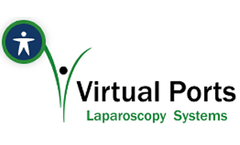Surgical Robotics Technology Articles & Analysis
12 articles found
Over the past decade, cloud computing has undergone remarkable expansion. The collective revenue generated by AWS, Google Cloud, and Microsoft surged from $49 billion in 2018 to an astonishing $206 billion in 2022.[i] Projections from Future Market Insights indicate that the revenue from cloud services is poised to maintain an impressive average annual growth rate of 21%, reaching a staggering ...
In the ever-evolving field of surgery, the integration of data and technology has ushered in a new era of surgical training and education, where precision and proficiency are elevated. We recently had the privilege of speaking with Peter Nau, MD, MS, FACS, Clinical Professor of Surgery-Gastrointestinal, Minimally Invasive and Bariatric Surgery, Surgical Director of the Digestive Health Center, ...
The following article is a repost of an interview that originally appeared in OR Today “Spotlight On: John W. Cromwell, MD” with Caresyntax customer, John Cromwell, MD, FACS, associate chief medical officer and director of surgical quality and safety at University of Iowa Hospitals and Clinics. ...
Caresyntax interviewed Misti Mattox, Service Line Administrator at Tallahassee Memorial HealthCare in Florida. Mattox was one of the early adopters of operating room (OR) data and cohort analysis to gain valuable insights to improve performance. In this blog, Mattox shares five tips for OR managers who want to leverage data to gain important insights into improving efficiency and ...
Caresyntax hosted a roundtable discussion on how digital transformation—specifically the collection of data in the surgical suite—can drive both quality and return on investment (ROI). The participants included a panel of esteemed healthcare professionals in surgery, nursing, investing, sales, healthcare technology, and academics. The following is a summary of the new pathways and ...
In recent years, there has been a growing trend of using video technology in surgical procedures to enhance precision, communication, and training. While the benefits of video in surgery are many, there are also concerns regarding the legal risks that may arise from its use. Medical professionals fear that video footage of a surgery could potentially be used against them in legal proceedings, ...
Lower costs, more security, easier handling and optimal CO 2 balance: With the BlueLavage® rinsing and suction system, UTK Solution GmbH has succeeded in adapting a proven surgical technology to modern clinical processes. The heart of the innovation is the reusable charging and energy unit, which completely avoids electronic waste and whose optimized energy transmission ensures smoother and ...
The long-term success of dental implant surgery is dependent, in part, on accurate planning and placement of the implant.1 Currently, there are many digital planning systems available to aid the clinician in pre-operative treatment planning, although the main challenge with these planning systems is to accurately transfer the digital plan to the clinical situation. Most systems involve taking a ...
INTRODUCTION The replacement of a single central incisor may be one of the most demanding implant treatments clinicians face. Still, clinicians have been able to achieve aesthetic results in these challenging cases through excellent treatment planning and meticulous surgical placement. The following case study highlights how Dr. Zokol was able to integrate Inliant® into his treatment plan ...
Abstract Background The Single Port Orifice Robotic Technology (SPORT) Surgical System by Titan Medical Inc. is designed to overcome the inherent challenges of minimally invasive single-access procedures. The aim of this preclinical study was to evaluate the feasibility of various digestive surgery procedures using this novel ...
But. there are some difficulties. We review the existing technologies for MISS surgery with regards to single-port devices, endoscope and camera, instruments, retractors and also the future perspectives for the evolution of MISS surgery. While we need to move ahead cautiously and wait for the development of appropriate technology, we believe that the "Ultimate ...
Summary: In treating brain cancers, neurosurgeons face a critical decision: remove too little tissue and risk fatal recurrences or remove too much and cause profound neurological damage. Presently, they rely on pre-operative surgical navigation technologies, such as MRI, in order to determine the contours of the cancerous tissue to be safely removed. These surgical navigation systems, in ...






